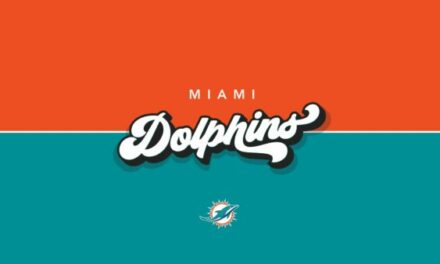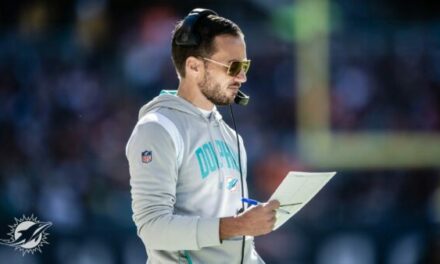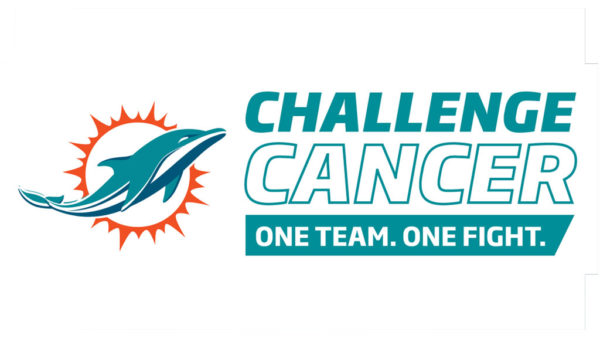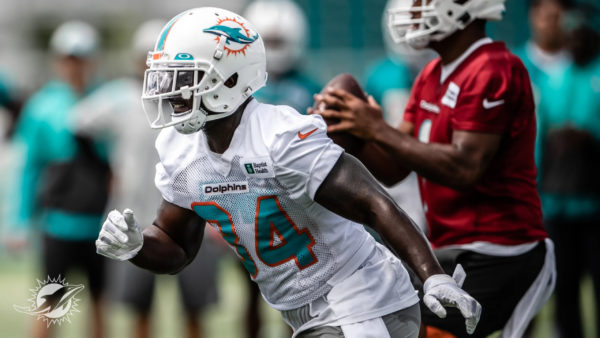
The Miami Dolphins spent significant time reimagining its backfield this past offseason.
Miami needed to change things up after finishing the 2021 and 2020 seasons 30th and 22nd in total rushing yards, respectively. In 2019, quarterback Ryan Fitzpatrick led the team in rushing, and the last time they had a 1,000-yard rusher was Jay Ajayi in 2016.
It’s hard to imagine Miami’s running game not getting better this season, given everyone they’ve added, but that comes with a problem in its own right. How does Miami fit all of these new pieces together effectively?
This matters because, under McDaniel, the 49ers finished first in total rushing yards in both 2020 and 2021 while also ranking near the top of the NFL in total rushing attempts. Miami will run the ball more this season no matter what, making the distribution of those carries extra important.
THE ONE-BACK/MOSTERT MODEL
This is probably the most popular talked model so far this offseason. In it, Mostert is seen as a bell-cow back eating up at least 60 percent of Miami’s carries, while Edmonds does the rest.
It makes sense, given Mostert has by far the most experience working with both McDaniel and the outside zone scheme he’ll bring to Miami this season. Mostert had a career-best season with McDaniel in 2019, recording a career-high 772 yards and eight touchdowns.
That model even served the 49ers well in the playoffs when Mostert put up 336 yards and five touchdowns in three games.
However, there are two significant issues with that. One, Mostert wasn’t the team’s bell cow that season. He was tied with Tevin Coleman for the lead in rushing attempts with 137, and he barely beat out former Dolphin Matt Bredia, who finished with 123 attempts.
Second, Mostert is coming off ACL surgery and has a history of other injuries. He’s played in just nine games the past two seasons. He didn’t practice during OTAs, although the team and Mostert expect him to be ready for week one.
So while this approach makes sense in theory, in practice, it probably wouldn’t end well for Miami.
[pickup_prop id=”21791″]
THE TWO-BACK MODEL
This model is my favorite and the one that seems the most likely given McDaniel’s history and Miami’s instance on adding backs as late May.
This model would see one of either Mostert or Edmonds get 50-55 percent of the carries while the other filled in the gaps.
Some see Edmonds as purely a third-down running back, but his rushing numbers with the Cardinals show a player on the cusp of a breakout if given more of an opportunity.
He finished 2021 with career-highs in yards, carries, and touchdowns despite only playing in 12 games and sharing the backfield with James Connor. He increased his average carries per game from 6.1 to 9.7, and Miami might be wise to get that number a tick higher.
Edmonds’ average of 5.1 yards per rush would’ve blown every other Miami rusher out of the water last season. It’s not likely Edmonds can sustain that number, but even a small dropoff still means he’s playing well.
This model has its own issues too. Like the Mostert Model, this introduces the injury risk of Mostert and Edmond’s injury history. He missed time with lower-body injuries last season, making increasing his workload a bit of a risk.
Additionally, Edmonds benefitted from light boxes while playing with the Cardinals, thanks to their consistent use of spread and air raid concepts. Miami’s scheme is much different, and Edmonds won’t see the same light boxes he did last season.
Still, Mostert and Edmonds complement each other’s running styles exceptionally well, making an actual 50/50 split or something close to it incredibly appealing.
THE THREE-BACK MODEL
This model is probably the second most likely model as it could work similarly to the model the 49ers used in 2019 when three different backs accounted for the team’s carries.
This model obviously includes Mostert and Edmonds but also inserts the newly signed Sony Michel into the equation. Some are writing Michel off as an afterthought, which is understandable given he was signed so late in the process.
However, Michel is the most productive back in Miami’s backfield. He ran for 845 yards last season, much higher than both Edmonds and Mostert’s career highs. He did that while sharing the backfield with other players too.
Not to mention, Michel has two Super Bowl rings.
Like Mostert and Edmonds, Michel has a history of injury. However, one of the benefits of this model is it keeps any of the three backs from getting overworked.
The possible downside to this approach is that Miami might spend too much time juggling running backs and situational substitutions; it would prevent any backs from getting into a rhythm.
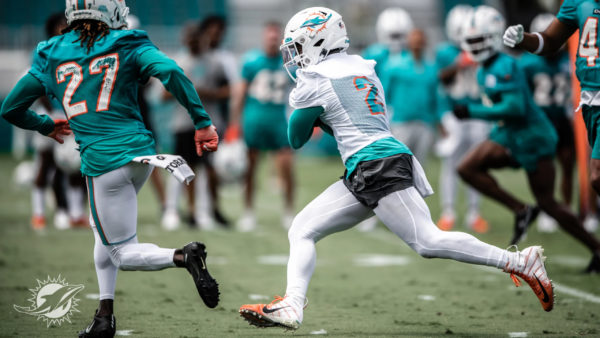
CONCLUSION
I’m a fan of the two-back model as long as it includes Edmonds getting at least half of the team’s carries. Assuming Mostert is healthy for week one, he profiles as the best option to take the other half.
All of these models ignore Myles Gaskin, who was Miami’s leading rusher in both 2020 and 2021. While I believe Gaskin has a place in an NFL rotation thanks to his pass-catching ability, it’s hard to argue he’s better than Mostert, Michel, or Edmonds as a runner.
Also, Edmonds’ pass-catching numbers are better than Gaskin’s, closing that door to playing time. If an injury happens, Gaskin has a chance to see the field and remain on the roster.
At the end of the day, Miami has many options, thanks to running backs with unique styles. How they choose to employ those styles will be an important factor in whether Miami’s offense finally climbs its way out of the NFL cellar.

